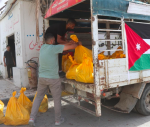You are here
Tackling pandemics at their root
Jun 21,2020 - Last updated at Jun 21,2020
BOSTON — Cattle colonies and “wet markets” for live animals are not unique to Wuhan, the Chinese city where the SARS-CoV-2 virus most likely originated. They exist all around the world. And given their largely unregulated nature, the emergence of the next major infectious pathogen is only a matter of time.
For example, you might not expect to find the world’s largest buffalo colony in Karachi, Pakistan, a metropolis with 14 million inhabitants. And with about 400,000 animals packed tightly in an area of six square kilometres, the Bhains Colony is certainly an incongruous sight. Yet, the colony, named after the Urdu word for buffalo, has survived and thrived for more than a half-century, and today has over 1,500 farms.
The colony is integral to Karachi’s milk and meat supplies, and a major source of employment for the local community. It has been the subject of numerous studies of local empowerment, entrepreneurship, and supply chains, including some funded by international aid agencies.
But the colony is mostly unregulated, as I discovered on my first visit there in January 2019. As part of my research for a book, I wanted to understand how local farmers dealt with infection in their cattle, and what happened when the drugs that they administered no longer worked.
Together with colleagues from a local university who had arranged the visit, I arrived at the colony early one sunny morning and was greeted by one of the few government veterinarians employed to take care of the buffaloes, as well as an unknown number of goats and sheep. The farms were extremely efficient, and the buffaloes’ milk was transported to all points in the city in under two hours. But the farmers followed few of the government’s veterinary health rules and adhered to few, if any, animal-feed guidelines.
Was the vet therefore concerned about cattle infections? Yes, absolutely, he said: if an animal got sick, there was no testing lab available to determine the cause, because Pakistan’s few labs were overwhelmed with human infections. And local government oversight was non-existent.
The vet had devised a solution, which he proudly described. Despite having no pharmacological training or understanding of drug action, he had produced his own cocktails of drugs. They were unapproved and untested, but, according to him, highly potent and in high demand.
Private farm workers whom I met during my visit questioned the efficacy of the various locally made cocktails. But they received little training to treat infected animals, or even to report a spreading infection. Quite the opposite: the blood of sacrificed animals, infected or not, was part of the high-protein diet (or “blood meal”) fed to livestock at a nearby poultry farm.
Farmers’ anecdotes aside, rigorous studies of cattle infection and drug resistance in Pakistan have not been conducted, owing to insufficient funding, which in turn reflects the government’s lack of interest. Policymakers have little appetite for regulating Bhains Colony and other cattle markets: Pakistan’s agricultural lobby is strong, and the national action plan to curb antibiotic resistance shies away from advocating strict regulations.
Regulatory agencies, for their part, have either been hamstrung by limited resources, or have looked the other way while rules were persistently flouted. At times, local regulators have themselves contributed to the problem of zoonotic infections through kickbacks, negligence and general incompetence. Siloed academic structures have limited the research into animal-human interactions, while the “One Health” concept linking human, animal and environmental health has still not fully caught on.
As we emerge from COVID-19 and try to prepare better for future pandemics, we cannot rely solely on improving track-and-trace systems, or ensuring that our stockpiles of ventilators and personal protective equipment are sufficient.
For starters, governments will have to reform the agricultural sector, both domestically and in regional and global cooperation with others. In countries where animal farming is a major economic activity, connecting agriculture with public health is essential. This must go beyond typical discussions regarding nutrition and include better and more centralised control over disease surveillance and public-health practices.
In many developing countries, including Pakistan, cattle markets and poultry farms are completely disconnected from public-health ministries, and do not communicate or coordinate with each other. This increases the risk of zoonotic diseases that the agricultural sector is ill-equipped to contain, and can also result in contradictory policies that ultimately are detrimental to human health.
But high-level coordination between agricultural sectors and public-health departments will not be enough. Farmers also need to understand the consequences of their practices for their own families and society. This will require a combination of education and economic incentives that encourage healthier farming practices.
Here, regional coordination agreements and international agencies such as the United Nations’ Food and Agriculture Organisation and the World Organisation for Animal Health can help, by developing awareness campaigns and providing grants for farms that are integrated with local ministries and institutions. And international organisations with nutrition, health and agriculture mandates must recognise that their silo-based operating models are no longer acceptable.
Lax or non-existent regulation of animal markets is what started the COVID-19 crisis. If we do not act on that lesson quickly, we may very soon have to learn it again.
Muhammad Hamid Zaman is professor of Biomedical Engineering and International Health at Boston University and the author of “Biography of Resistance: The Epic Battle Between People and Pathogens”. Copyright: Project Syndicate, 2020. www.project-syndicate.org












